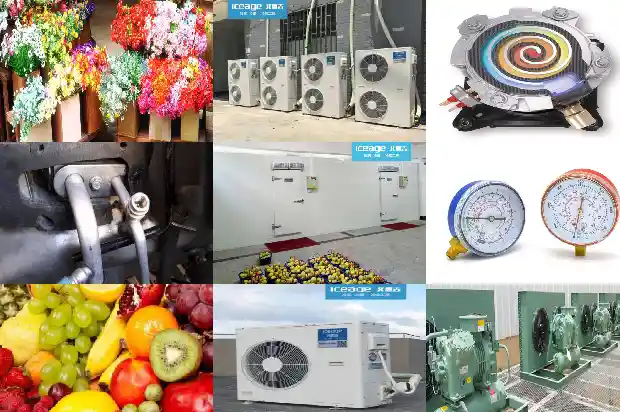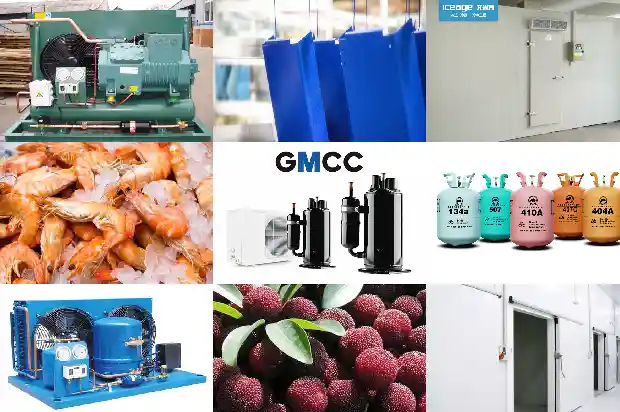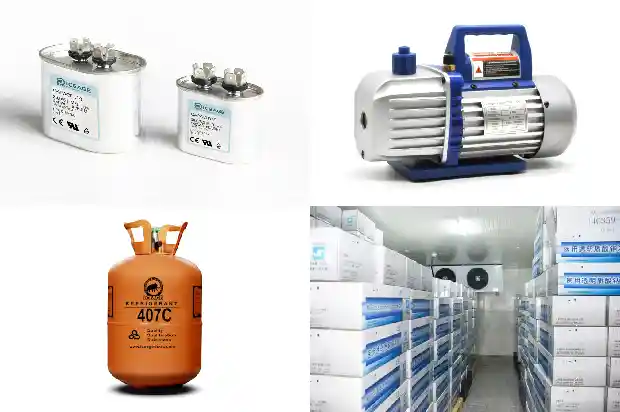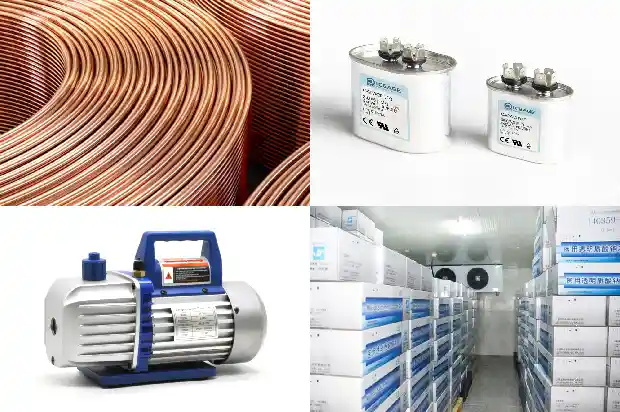Three Common Methods for Removing Water Scale from Water - cooled Condensers
2025-02-17
After long - term use, it is easy for scale to form in the pipes of the condenser.
There are approximately three methods for preventing and removing scale:

There are approximately three methods for preventing and removing scale:
- Mechanical Descaling Method: Mechanical descaling is a method of removing scale from the condenser with steel cooling pipes using a flexible - shaft tube cleaner, especially suitable for vertical shell - and - tube condensers.
- Operation Method:
- 1.
1.1 Extract the refrigerant from the condenser.
- 1.1.2 Close all the valves connecting the condenser to the refrigeration system.
- 1.1.3 Supply cooling water to the condenser normally.
- 1.1.4 Use an umbrella - shaped gear - like scraper connected to a flexible - shaft tube cleaner to rotate and scrape downwards in the vertical pipes of the condenser to remove scale.
The heat generated by the friction between the scraper and the pipe wall is cooled by the circulating cooling water. At the same time, the removed scale, rust, and other dirt are flushed into the pool.
- 1.
- 1.2 During the descaling process, determine the appropriate diameter of the hob according to the scale thickness of the condenser, the degree of corrosion of the pipe wall, and the years of use. However, for the first - pass descaling, the diameter of the hob should be slightly smaller than the inner diameter of the cooling pipe to prevent damage to the pipe wall. Then, select a hob with a diameter close to the inner diameter of the cooling pipe for the second - pass descaling. These two passes of descaling can remove more than 95% of the scale and rust - stained dirt in the condenser.
- 1.3 This mechanical descaling method uses the rotation and vibration of the umbrella - shaped gear - like hob during the rotation and feeding process in the cooling pipe to remove the scale and rust - stained dirt in the cooling pipes of the condenser. After the descaling is completed, pump out all the water in the condensate pool, clean the removed scale, rust, and other dirt from the bottom of the pool, and refill the water.
- Operation Method:
- Chemical Acid - pickling Descaling Method: Clean the condenser with a prepared weak - acid descaling agent to make the scale fall off and improve the heat - transfer efficiency of the condenser.
- Operation Method:
- 2.1.1 Prepare the descaling solution in the pickling tank, start the pickling pump, and let the descaling agent solution circulate in the condenser's condensing pipes for 24 hours. Under normal circumstances, the scale is basically removed after 24 hours.
- 2.1.2 After stopping the pickling pump, use a circular steel brush to pull and brush back and forth inside the pipe wall of the condenser, and rinse the scale and rust clean with clean water.
- 2.1.3 Rinse the remaining descaling agent solution in the pipe repeatedly with clean water until it is completely clean. The chemical acid - pickling descaling method is suitable for both vertical and horizontal shell - and - tube condensers.
- Operation Method:
- Electronic Magnetic Water Descaling Method: The working principle of the electronic magnetic water device is that calcium, magnesium, and other salts in the cooling water flowing through the condenser are dissolved in water in the form of positive and negative ions at room temperature. When the cooling water flows through the transverse magnetic field of the magnetic water device at a certain speed, the dissolved calcium and magnesium ions obtain induced electrical energy, changing their charge states. The electrostatic attraction between ions is interfered with and disrupted, thus changing their crystallization conditions. The crystal structure becomes loose, and its tensile and compressive resistance decreases. It cannot form hard scale with strong adhesion, but becomes loose sludge that is discharged with the flow of cooling water.
- 3.1 This descaling method can not only effectively prevent the formation of new scale but also remove the original scale. Because after using the electronic magnetic water device, the ions lose their scale - forming ability, which means the original scale loses its protective effect. In addition, the magnetized cooling water has a certain amount of induced electrical energy. At the same time, due to the different expansion coefficients of the steel pipes and the scale in the condenser, the original scale gradually cracks. The magnetized water continuously invades the cracks, destroying the adhesion of the original scale, making it gradually loose and fall off on its own, and then being continuously carried away by the circulating cooling water.
- 3.2 The descaling method of the electronic magnetic water device is simple and easy to implement, with low labor intensity, and can be used for descaling and preventing scale formation without affecting the normal operation of the refrigeration system.

Significance of Descaling and Energy - saving:
Once scale forms in the condenser, the thermal resistance of heat conduction increases. As a result, the heat resistance increases and the heat - transfer coefficient value decreases. Since the condensing temperature is inversely proportional to the heat - transfer coefficient, the condensing temperature of the condenser rises, and the condensing pressure also increases accordingly. Moreover, the more serious the scale formation in the condenser, the more significantly the condensing pressure increases. This leads to an increase in the power consumption of the refrigeration machine and a corresponding increase in the power consumption of all operating equipment in the refrigeration system, causing a waste of electrical energy.
Once scale forms in the condenser, the thermal resistance of heat conduction increases. As a result, the heat resistance increases and the heat - transfer coefficient value decreases. Since the condensing temperature is inversely proportional to the heat - transfer coefficient, the condensing temperature of the condenser rises, and the condensing pressure also increases accordingly. Moreover, the more serious the scale formation in the condenser, the more significantly the condensing pressure increases. This leads to an increase in the power consumption of the refrigeration machine and a corresponding increase in the power consumption of all operating equipment in the refrigeration system, causing a waste of electrical energy.
Related Articles
- Introduction to Inspection and Handling Methods for Refrigerant Leak in Cold Storage
- Reasons for Frost Formation in Cold Storage and Defrosting Methods
- Maintenance Methods for Small Modular Cold Storage Failures
- Cleaning Procedures and Methods for Cooling Towers and Heat Exchangers
- Common Cold - chain Storage Methods for Fruit and Vegetable Cold Storage
- Cleaning Methods for Different Types of Condensers in Refrigeration Devices
- Why Should Refrigerant Be Filled in Liquid Form? What Are the Filling Methods?
- For Computer Room Air Conditioners, Besides Air - cooled and Water - cooled, What Other Cooling Methods Are There?
- Maintenance Methods for Faults in Screw Refrigeration Air - conditioner Compressors
- Maintenance Methods for Refrigerant Leak in Air - conditioner Outdoor Unit
- Common Faults and Troubleshooting Methods of the Moving Mechanism of Piston Compressors
- Are you familiar with the detection and maintenance methods of air conditioner components?
- Introduction to the Cleaning Processes and Methods of Heat Exchangers and Cooling Towers
- What are the precooling methods after the installation of cold storage?
- The Significance of Subcooling Degree in Refrigeration Systems and Methods for Achieving Subcooling
- Common Operating Faults and Treatment Methods of Centrifugal Compressors
- Methods for Mold Removal in Cold Storage
- Cleaning Methods for Refrigeration Equipment
